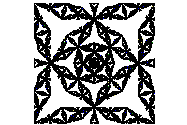Number of PiecesThis page demonstrates how to calculate the number of pieces of each type in of one of the designs. |
|
The following picture shows the substitution tiling for this design, and shows D0, D1, T0, T1, S0 and S1.
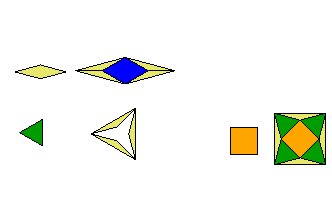
In the substitution, the diamond is replaced with 2 diamonds (4 half-diamonds) and two triangles (which make up a blue diamond). The triangle is replaced with 1.5 diamonds (3 half-diamonds). The square is replaced with a square, 4 triangles, and 2 diamonds (4 half-diamonds).
Ignoring the square for a moment, this substitution can be represented by a matrix
|
2 = number of diamonds in a diamond |
2 = number of triangles in a diamond |
|
1.5 = number of diamonds in a triangle |
0 = number of triangles in a triangle |
This matrix is called the substitution matrix or transform matrix, which I call A.
![]()
The following picture shows D2.
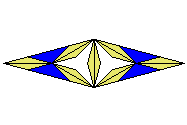
Note that the each half-diamond in D1 was replaced with half of D1. Also, each triangle in D1 was replaced with half of T1.
The following picture shows T2.
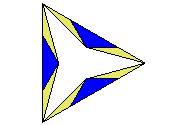
Note that each half-diamond of T1 was replaced with half of D1.
The number of each type of piece can be calculated by multiplying A by itself to get A2.
![]()
So the number of diamonds in the larger diamond is 7 and the number of triangles is 4. This is verified by counting the number of objects in the diamond above, which has 14 half-diamonds and 8 half-triangles.
The number of diamonds in the larger triangle is 3 and the number of triangles is 3, which can also be verified by looking at the bigger picture of the triangle.
The following picture shows D3.
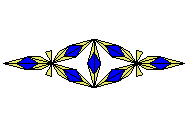
The following picture shows T3.
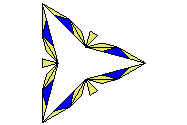
The number of each type of object is found by calculating A3.
![]()
In general the problem becomes how to calculate An. This is done by solving for eigenvalues and eigenvectors of the matrix A. The eigenvalues are 3 and -1. After a little manipulation (or by eyeballing), this means that the matrix An is

These 4 elements determine the number of diamonds and triangles in each Dn and Tn.
Number of elements in a square
To determine the number of pieces in a square Sn a larger matrix must be defined that includes iterating the pieces in a square.

The third column shows the number of squares in each object. The third row shows the number of each object in the square.
The eigenvalues are the same as in the matrix A above with the additional eigenvalue of 1. This eigenvalue represents the number of squares in each square Sn, which is 1.
Back to Mathematics behind the Designs.
Copyright 1998-2004 by Jim Millar
